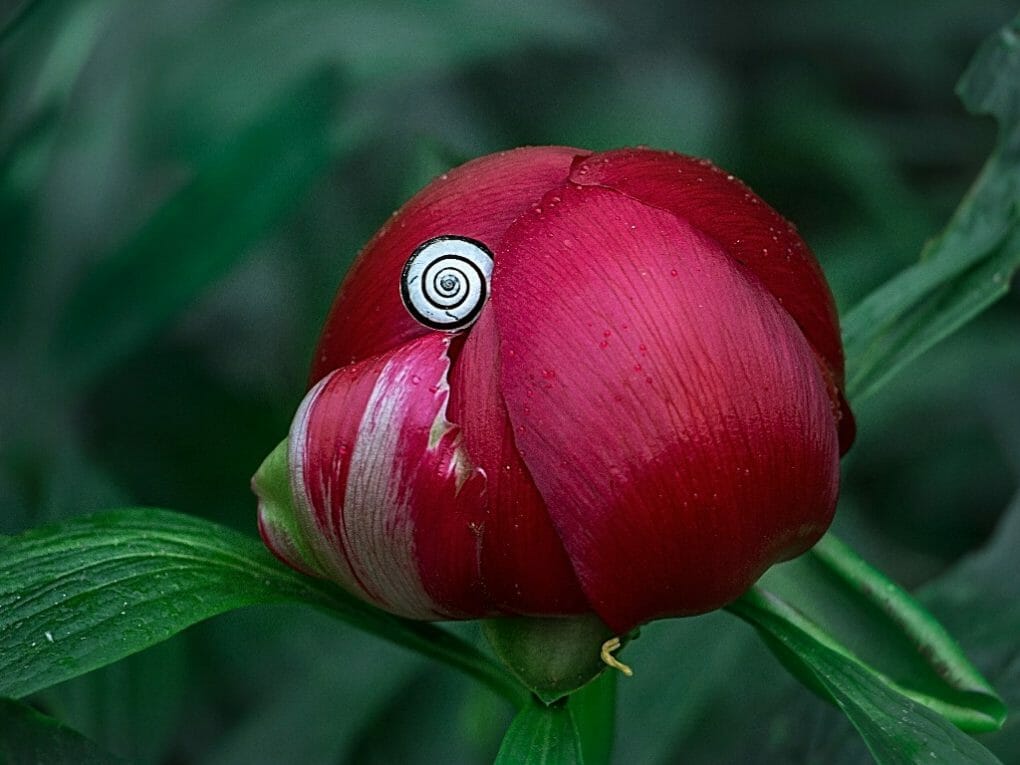How to Water Peony? | How Much Water Do Peonies Need?

Watering your peony is an essential part of its care. Not only will it help to keep the plant hydrated, but regular watering also encourages good growth and disease prevention. When watering your peony, make sure to do so deeply and often enough that water runs continuously from the pot or container. Water should also be kept evenly moist throughout the entire root zone – steadily soaking the soil beneath the flowers and around them.
It may be time for a new irrigation cycle if you notice any yellowing or wilting of leaves, weak stems, or dryness in general. Be sure to check with a professional if you have any questions about how frequently to water your peony plants or when they are likely to need attention.
Table of Contents
Watering Procedure
For a brief period in late spring or early summer, peonies (Paeonia spp. ) are in bloom, yet their lush, green foliage endures until the first frost of fall. Although certain herbaceous perennial peony variations may thrive in warmer temperatures, most peony species are best suited to USDA plant hardiness zones 3 through 8. Tree peonies, or P. suffruticosa, are hardy from USDA plant hardiness zones 5 through 9. Watering is essential for the survival and blooming of all plants, whether herbaceous or trees.
- Peonies require a sunny position with good drainage, free of any risk of flooding. Before planting, amend the soil by working in a two-inch layer of compost to enhance drainage and add organic matter.
- When new growth appears on peonies in the spring, water them if there has been no rain for two weeks or more. Water twice weekly, just enough to keep the top four to six inches of soil moist but not so much that it pools.
- Leave a small space between the mulch and the peony stems. Then, put a 2-inch layer of bark or another organic mulch around the peonies. Mulch prevents soil from drying out too quickly by reducing the rate at which water evaporates from the ground.
- Keep watering once a week, even after the flowers have faded off in the heat of summer. Irrigate the top six inches of soil when rain is scarce by applying about an inch every week. Maintaining a robust peony leaf during the summer is essential for crop success in the coming season.
How Much Water Do Peonies Need?
Peonies are easily recognizable due to their big, multicolored blossoms. Peonies can be grown in a wide range of soil types, although they are susceptible to root rot if planted in waterlogged, poorly drained soil. However, this doesn’t imply that your peony won’t benefit from regular watering. Contrarily, these gorgeous perennials require consistent moisture throughout the first year and sometimes extra watering throughout the second and subsequent years. The frequency with which your peonies need watering will vary depending on your location, but knowing a few basic tricks will ensure their continued health and happiness.
Peonies grow wild in western North America, Western Europe, and Asia. To propagate, simply divide the plant’s thick store roots. These roots don’t go very deep into the ground. There aren’t many exposed roots; instead, they have large, sprawling branches. Because of how they’re built, they cannot efficiently collect water from the ground or the air.
Once established, peonies can withstand drought, but regular watering promotes stronger growth and thicker roots. Plants often require an inch and a half (2.5 cm) of water daily. Telling When a Peony Needs Watering Watering needs of peonies can be easily determined by simply touching the soil. While merely touching the top may suffice during the warm summer months, a finger should be inserted throughout the cooler spring and fall months. For plants, this means that the earth is dry when your second knuckle becomes exposed. Waning, falling buds, and discolored, withered foliage are outward signs of the problem. If you’re having difficulties gauging the soil’s wetness to determine when to water your peony, you can get a soil moisture tester. Generally speaking, established plants should be given a thorough soaking every 10-14 days. Watering needs for newly sprouted plants should be approximately doubled.
How to Determine Whether Your Peony Requires Water

Simply touching the soil is the quickest and easiest way to determine how much water a peony requires. Simply touching the top may be acceptable during the warm summer months, but during the cooler spring and fall months, you need to insert a finger. It is necessary to water the plant if the soil is dry to the second knuckle. Visual indicators will include withering, falling buds, and discolored and dried-out foliage. If you have difficulties determining when it is time to water your peony, you can buy soil moisture testers. These testers will tell you how much moisture is in the soil. When caring for established plants, a reasonable rule of thumb is to provide a substantial amount of water once every 10-14 days. It is important to provide roughly twice as much water to young plants just starting.
The Importance of Appropriately Watering Your Plants
Plants, like most other forms of life, are unable to function properly in the absence of water. Water makes up most of a plant’s cellular mass, which can be as high as 95%, whereas only roughly 55% to 60% of human cells comprise water. Without water, plants cannot generate new tissue, which prevents them from developing and flowering.
Through their network of underground roots, plants can draw water up from the earth. In the process of photosynthesis, water and carbon dioxide taken in by the plant through its leaves are combined to generate glucose. Plants require glucose as a fuel source to produce cellulose, which is a biological component that is essential for the formation of new plant tissue.
In addition, water enables plants to extract nutrients from the soil, such as nitrogen, phosphorus, and potassium. These nutrients are carried by the water that is taken up by the plant’s roots. Every vitamin uniquely contributes to the body. Phosphorus, for instance, is utilized in the process of floral development.
Plants utilize water to prevent themselves from overheating in environments that are hot and dry. Because of the leaves vast surface area, the plant can rid itself of any extra water. Because of this evaporation, the roots are encouraged to absorb more water from the soil, which helps to maintain the plant’s hydration levels.
When Should Peonies Be Watered?

Peonies need to be watered around once every seven to ten days unless there has been recent rainfall in the area. If it has been a few weeks since there has been any rain, you should use your finger to test the soil. If the top two inches of soil are dry to the touch, the plant needs to be watered.
When the first signs of new growth appear in the spring, you should provide established peonies with water. Continue to water the plant after the flowers have died off to preserve the foliage in good health and to stimulate the plant’s growth for the following year.
If you wish to start a new peony plant or already have young peonies, you should water them more often for the first year. This allows the peony to get its footing and thrive.
If possible, give your peony some water first thing in the morning. During the scorching afternoons, the plant can retain more moisture. If you water your plants in the afternoon during hot weather, most of the water may evaporate before it reaches the roots of the plants.
